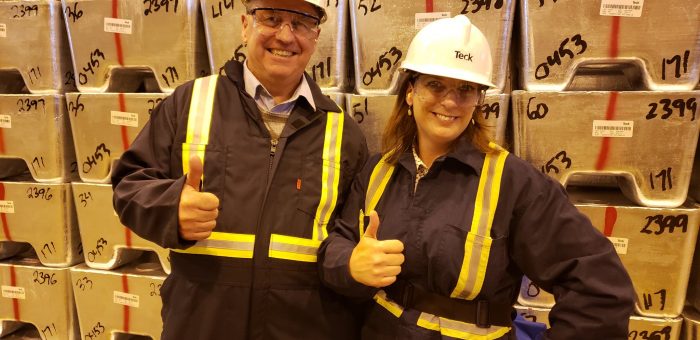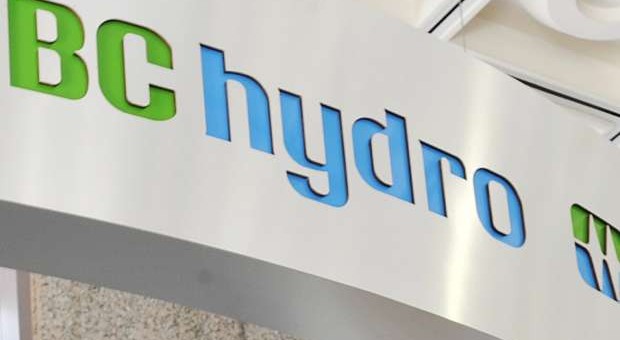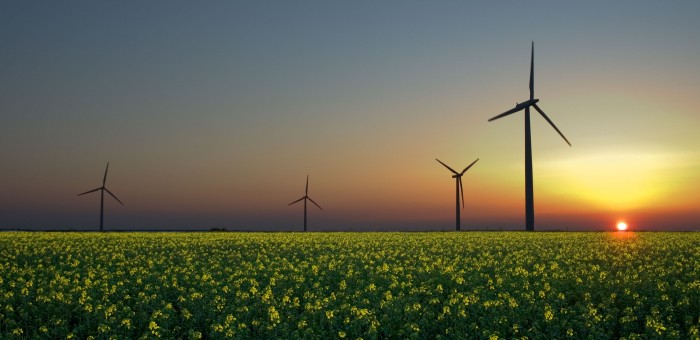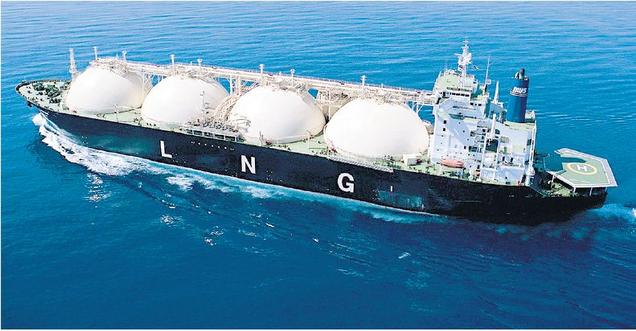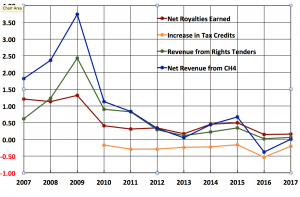Site C
Presenting at the Clean Energy BC Spring Conference: Powering Generations — Legacy to the Future
Today I had the distinct honour of giving a keynote presentation at the 2019 Spring Conference of Clean Energy BC whose theme was Powering Generations: Legacy to the Future. After the presentation we toured the Teck smelter in Trail to explore innovation in the mining sector first hand.
Below I reproduce the text and slides of my speech.
Text and Slides of Speech
It’s a distinct honour for me to be invited to address you, the delegates to Clean Energy BC’s Spring Conference: Powering Generations: Legacy to the future.
 Over these past 25 years Clean Energy B.C. has been the voice of British Columbia’s Clean Energy sector and I am sincerely grateful for your ongoing contributions to our province.
Over these past 25 years Clean Energy B.C. has been the voice of British Columbia’s Clean Energy sector and I am sincerely grateful for your ongoing contributions to our province.
The BC Green Party and I share your goal to support the growth of British Columbia’s clean energy sector and we will continue to do what we can to improve the regulatory and economic environments for clean energy production through our work in the B.C. legislature.
Since first getting elected in 2013, I’ve watched growing uncertainty emerge in British Columbia’s clean energy sector. I’ve watched the Canadian Wind Energy Association pull out of BC. I’ve watched BC Hydro’s standing offer program grind to a halt.
I’ve witnessed the release of a poorly researched report to justify government’s ideological position on independent power producers. And I’ve watched a growing sense of overall frustration emerge as your sector struggles to remain viable.
Of course, as we all know, government’s decision to proceed with the construction of the Site C hydroelectric project was both unnecessary and fiscally-foolish.
It has undermined the investments many of you made in clean energy here in BC. And it puts the ratepayer on the hook for inevitable cost overruns down the road.
But we are where we are and for me, it’s important to look ahead.
I entered politics via an unusual route. By now, most of you know that prior to my election as the MLA for Oak Bay – Gordon Head (and subsequently becoming leader of the B.C. Green Party), I was Lansdowne Professor and Canada Research Chair in Climate Modelling and analysis at the University of Victoria.
I’d served as a Lead Author on the United Nations Intergovernmental Panel on Climate Change 2nd, 3rd, 4th and 5th scientific assessments. I was Chief Editor of the Journal of Climate and I had the honour of participating as a member of BC’s first Climate Action Team set up in 2007 under Gordon Campbell’s leadership.
The year 2007 was a remarkable period in British Columbia’s history with respect to the development of climate policy. It was also a particularly noteworthy time for me.
I’d been publishing papers in the field of climate science for more than two decades, all the while listening to political leaders around the world talk about the importance of dealing with global warming while concomitantly doing virtually nothing to reduce greenhouse gas emissions and offering staggering subsidies to the fossil fuel sector.
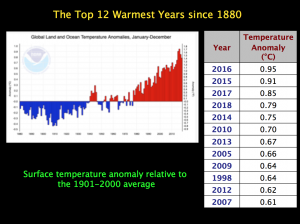 But in 2007 in British Columbia I finally saw a government take the matter seriously and recognize the challenge of global warming for what it was: an economic opportunity for innovation like never before. Gordon Campbell recognized that early leadership would pay off and that all eyes in the world would be turned to BC in 2010 when we hosted the Winter Olympics.
But in 2007 in British Columbia I finally saw a government take the matter seriously and recognize the challenge of global warming for what it was: an economic opportunity for innovation like never before. Gordon Campbell recognized that early leadership would pay off and that all eyes in the world would be turned to BC in 2010 when we hosted the Winter Olympics.
On November 20, 2007 the Honourable Barry Penner, Minister of Environment, introduced the Greenhouse Gas Reduction Targets Act, which put into law British Columbia’s 2020 reduction target of 33% and a new 2050 reduction target of 80% relative to 2007 levels.
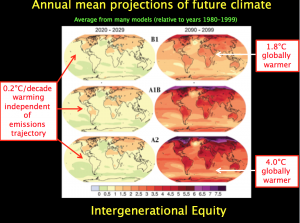 The act also required carbon neutrality for the public sector, including universities, schools, hospitals, Crown corporations, and the government by 2010. And over the next several years as government rolled out its policy measures, BC head off on a path to meet its legislated targets.
The act also required carbon neutrality for the public sector, including universities, schools, hospitals, Crown corporations, and the government by 2010. And over the next several years as government rolled out its policy measures, BC head off on a path to meet its legislated targets.
But all of our successes started to unravel shortly after British Columbia’s provincial leadership changed in 2010. In fact, every year since the 2011 change of leadership, emissions have gone up.
Why? Because of the signal government sent to the market that our emissions reductions targets no longer mattered — that economic prosperity would be found in industries from the last century, and that they would help take us back there.
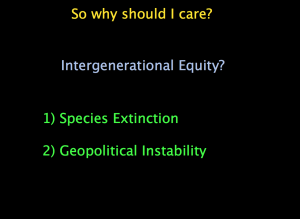 It happened almost immediately after the leadership of the BC Liberals changed. In fact, I remember participating with Judith Sayers, Paul Kariya and Graham Horn (from Innergex) at a press conference hosted by Clean Energy BC in September 2011 where we pleaded with government to stick with its plan to become self-sufficient in clean energy.
It happened almost immediately after the leadership of the BC Liberals changed. In fact, I remember participating with Judith Sayers, Paul Kariya and Graham Horn (from Innergex) at a press conference hosted by Clean Energy BC in September 2011 where we pleaded with government to stick with its plan to become self-sufficient in clean energy.
In 2012, knowing that scientists had done their job in defining the problem and that it was up to politicians to do theirs if we are to deal with the challenge of global warming — and they are not — I accepted an invitation to run as a candidate representing the BC Green party. I could no longer sit on the sidelines as the legacy of Mr. Campbell’s climate leadership was dismantled.
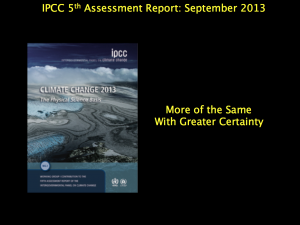 The BC Liberals under Christy Clark had stifled clean innovation and introduced policies that further entrenched “dig-it and ship-it” oil and gas development.
The BC Liberals under Christy Clark had stifled clean innovation and introduced policies that further entrenched “dig-it and ship-it” oil and gas development.
And were the BC Greens not holding the balance of power in a minor government, I fear that the BC NDP would be no different (as witnessed by the outrageous giveaway involved in their proposed further subsidies to the LNG industry).
When the market no longer supported these activities, successive governments doubled done by creating more and more subsidies in a desperate attempt to squeeze water from a stone.
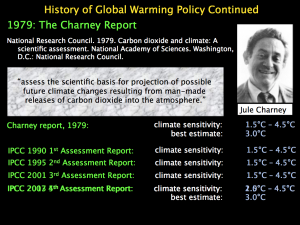 I often reflect back on the spring of 2017 when my colleagues and I were locked in negotiations with both the BC NDP and the BC Liberals as we hashed out the foundations of a confidence and supply deal. I reflect back to remind me of why I got into politics and why we ended up supporting a BC NDP minority government.
I often reflect back on the spring of 2017 when my colleagues and I were locked in negotiations with both the BC NDP and the BC Liberals as we hashed out the foundations of a confidence and supply deal. I reflect back to remind me of why I got into politics and why we ended up supporting a BC NDP minority government.
Climate scientists had done their job in defining the problem and that it was up to politicians to do theirs if we are to deal with the challenge of global warming. Only the BC NDP appeared serious in its desire to reduce our greenhouse gas emissions.
And so the seeds were planted for what would end up becoming CleanBC.
CASA – our confidence and supply agreement – underpins B.C.’s minority government. It is an agreement to work in good faith, with no surprises, with the B.C. NDP.
 CASA has provided the B.C. Green caucus with an opportunity to champion key aspects of our economic platform, and the ability to work in partnership with government on our priority issues like climate policy.
CASA has provided the B.C. Green caucus with an opportunity to champion key aspects of our economic platform, and the ability to work in partnership with government on our priority issues like climate policy.
From our perspective, of course, these two files are one and the same.
Two key elements of our 21st century economy platform were embedded in the CASA agreement to help us identify and hence seize economic opportunities in the emerging economy.
The first was the Emerging Economy Task Force set up to advise government on how to respond and adapt to emerging economic challenges and opportunities. Government needs modernizing so that it is considerably more responsive to technological innovation.
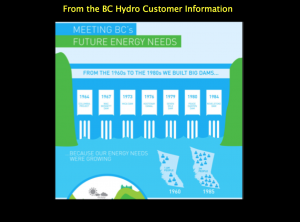 The Emerging Economy Task Force looks to the future, identifying emerging trends and advising government on how to maintain our competitiveness and achieve prosperity amidst these changes.
The Emerging Economy Task Force looks to the future, identifying emerging trends and advising government on how to maintain our competitiveness and achieve prosperity amidst these changes.
The second element from our platform integrated into CASA was the Innovation Commission (now Innovate B.C.) as well as the appointment of an Innovation Commissioner.
The innovation commissioner serves as an advocate and ambassador for the B.C. technology sector in Ottawa and abroad, to enable B.C. companies to more easily tap into existing federal programs and build key strategic relationships internationally.
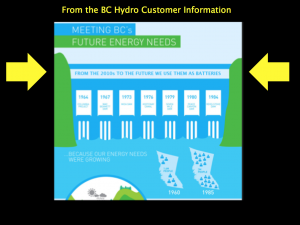 I’m confident that both of these initiatives will continue to bolster and grow key sectors of our economy.
I’m confident that both of these initiatives will continue to bolster and grow key sectors of our economy.
But of course, the most important words in CASA from my perspective are:
“Implement a climate action strategy to meet our targets”
which is why we pushed government to legislate these in the spring of last year:
GHG emissions are to be reduced by at least 40 per cent below 2007 levels by 2030, 60 per cent by 2040, and 80 per cent by 2050.
Targets without a plan to meet them are not worth the paper they are written on. Canadian political history is littered with a legacy of missed targets. And that’s why we turned our attention to delivering a pathway to reach these targets.
A meaningful climate plan requires careful planning, innovative ideas, and a new economic vision for how B.C. will prosper in a changing and challenging world.
If we are to meet our legislated targets — we will be doing so with clean energy — likely following the lead of people in this room.
In that regard, B.C. is setup to succeed. From our access to cheap, renewable energy, to our educated workforce, to our innovative business community, to the quality of life we can offer here, together with British Columbia’s natural beauty, we have an opportunity to develop our Province into one of the most prosperous jurisdictions in the world.
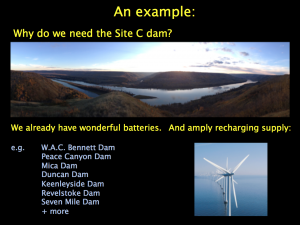 Our challenges are too big, and the consequences too profound, to ignore this opportunity.
Our challenges are too big, and the consequences too profound, to ignore this opportunity.
We stand to gain by building on the expertise that our neighbours have already developed in these areas. And yet, there is still so much room to grow in this sector, to improve upon current technologies and policy innovations.
The approval Site C was a terribly disappointing decision for me because I believe small-scale, distributed energy projects are the way of the future for B.C. and that we should fundamentally change the mandate of B.C. Hydro.
B.C. Hydro should no longer be the builder of new power capacity.
Rather, it should be the broker of power deals, transmitter of electricity, and leveller of power load through improving British Columbia power storage capacity.
Let industry risk their capital, not taxpayer capital, and let the market respond to demands for cheap power.
We need to optimize support for clean energy development, including grid storage for community or privately generated power and work with neighbouring jurisdictions to expedite the phase out of fossil fuel powered electricity generation.
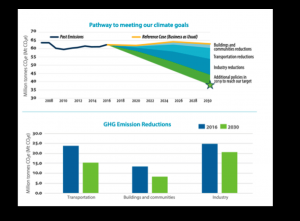 The future of economic prosperity in B.C. lies in harnessing our innate potential for innovation and bringing new, more efficient technologies to bear in the resource sector.
The future of economic prosperity in B.C. lies in harnessing our innate potential for innovation and bringing new, more efficient technologies to bear in the resource sector.
B.C. will never compete in digging dirt out of the ground with jurisdictions that don’t internalize the same social and environmental externalities that we value.
We will excel through being smarter, more efficient, cleaner and by working together to solve our problems.
This means that we not only export the dirt, but we also export the knowledge, technology and value added products associated with resource extraction.
To get a fair value for our resources that deliver maximum benefits to our communities, we need to get smarter and more strategic when it comes to embracing innovation.
Government should be doing more to support these initiatives and create fertile ground for a sustainable, resilient, and diverse economy.
We should be using our boundless renewable energy resources to attract industry, including the manufacturing sector, that wants to brand itself as sustainable over its entire business cycle, just like Washington and Oregon have done.
We should be setting up seed funding mechanisms to allow the B.C.-based creative economy sector to leverage venture capital from other jurisdictions to our province.
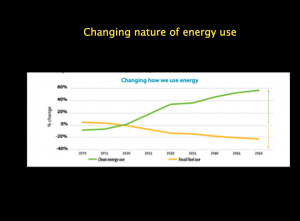 By steadily increasing emissions pricing, we can send a signal to the market that incentivizes innovation and the transition to a low carbon economy.
By steadily increasing emissions pricing, we can send a signal to the market that incentivizes innovation and the transition to a low carbon economy.
The funding could be transferred to municipalities across the province so that they might have the resources to deal with their aging infrastructure and growing transportation barriers.
Yes, we should be investing in trade skills, as described, for example, under a B.C. jobs plan.
But we should also be investing further in education for 21st century industries like biotech, high tech and cleantech. It’s critical that we bring the typically urban-based tech and rural-based resource sectors together.
Similarly natural gas has an important role to play, but we should use it to use in our domestic market and explore options around using it to power local transport.
Global investment trends are being driven by the world’s shared Paris commitments, predicated on the fact that keeping global warming under 2 degrees Celsius is far more cost-effective than dealing with the effects of a temperature rise above that level.
This shift presents a significant opportunity for B.C.’s economy.
Our province is well poised to bolster its leadership in the cleantech sector – we have a strong competitive advantage in the building blocks required to foster a knowledge-based economy.
For we know responding to the challenge of climate change is both an intergenerational opportunity and an intergenerational responsibility.
CleanBC’s sectoral approach doesn’t simply show a plausible pathway to meeting our targets – rather, it drives a return to the vision of a clean 21st century economy.
We have one of the best public services in the world and for a long time they have had the policies ready to get us there.
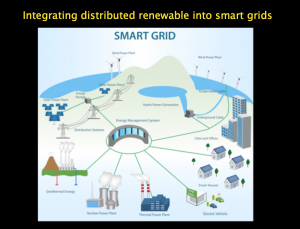 What has been missing is political leadership. This minority government must – and will – show that leadership.
What has been missing is political leadership. This minority government must – and will – show that leadership.
I’m hopeful, but still wary of our starting point and the strength of the status quo.
Yet I am truly excited about the prospects that lie ahead for this minority government. We’ve accomplished a remarkable amount already in just two short years.
But there is so much more to do. The years ahead will require all of us to come together to look for areas where we can be partners – to drive the innovation that will enable us to electrify our economy and decarbonize our energy systems. I don’t doubt that many of the emerging solutions we need will in fact come from the people in this room.
The transition to a low carbon economy presents an exciting challenge for the Clean Energy sector. For example, one of the flagship proposals within CleanBC is the aggressive Zero Emission Vehicle which came into law with the passage last week of the Zero Emission Vehicle Act.
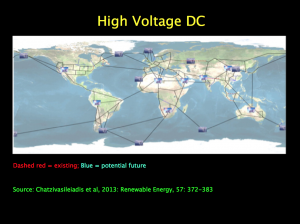 This act mandate that zero-emitting vehicle must make up 10% of light-duty vehicle sales by 2025, 30% by 2030, and 100% by 2040. The good news is that in the month of May alone, 15% of all new light-duty vehicle sales were zero-emitting.
This act mandate that zero-emitting vehicle must make up 10% of light-duty vehicle sales by 2025, 30% by 2030, and 100% by 2040. The good news is that in the month of May alone, 15% of all new light-duty vehicle sales were zero-emitting.
With the electrification of the transportation sector and our built environment comes the opportunity for innovation in smart grid systems.
Whether it be interconnecting myriad distributed production, with innovative local storage systems and point to point high voltage DC transmission, or whether it be the design of new electric transportation systems, or whether it be electrification of our natural resource sector, Clean Energy BC has a strong and vibrant future in our province.
And I remain committed to your sector and I ask that you help me help you. I don’t know what I don’t know. I don’t have all the solutions… but, I know that it is not this: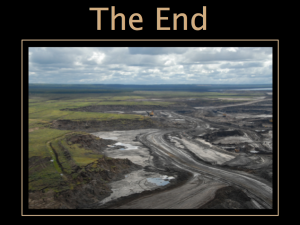
Budget Estimates: BC Hydro and the collapse of BC’s clean energy sector
On Thursday last week I was up during budget estimate debates to ask the Minister of Energy, Mines and Petroleum resources a series of questions pertaining to BC Hydro, the standing offer program for clean energy, and Site C. As you will see from the exchange (reproduced in text and video below), I was quite frustrated with the lack of substance in the answers I received to the questions I posed.
Video of Exchange
Text of Exchange
A. Weaver: A thank-you to the member for Shuswap for his thorough canvassing of the issue of the Zapped report. I’d like to pick up on this a little bit. The member was able to canvass the procurement process, which I was as equally troubled by as the member was. The answers drawn from that were very troubling.
What I’d like to do is come up to some of the comments that are in the report and fill in some additional detail, building on what the member for Shuswap has asked. For example, the report noted that the average surplus per year that B.C. Hydro acquired was “9,500 gigawatt hours of blended energy.” However, the Clean Energy Association of B.C. highlighted that the average surplus that B.C. Hydro recorded was closer to 1,532 gigawatt hours. They base this off the number shown on B.C. Hydro’s website.
My question to the minister is: could the minister confirm that B.C. Hydro actually did acquire, as stated in the report, 9,500 gigawatt hours per year of unneeded energy?
Hon. M. Mungall: Sorry for the length in trying to sort this out, but I just want to make sure that I completely understand what the member is asking and understand the analysis and the expertise those who are sitting with me have to offer.
Basically, what happened was that the way the previous government defined what B.C. Hydro could do in being self-sufficient is what drove what ultimately would be this surplus — B.C. Hydro having to buy power that was surplus to their needs. As I stated earlier for the member’s benefit, shutting Burrard Thermal, saying that only very modest upgrades to existing assets plus Site C were allowed…. That all constrained B.C. Hydro’s ability to meet the demand of its customers throughout the province.
So it forced B.C. Hydro into a position where they had to buy power from private power producers, which therefore created this market for private power producers to develop their generation assets and then sell that power back to B.C. Hydro. As I’ve stated earlier and as Mr. Davidson pointed out in his report, much of that power was expensive and was also coming on line at the wrong time of year — namely, during the spring freshet, when B.C. Hydro just didn’t need it.
A. Weaver: I shake my head every time I get an answer. The minister is saying what the report concludes, but the report assumed the conclusion that it concluded. So it’s kind of circular to suggest that the report is concluding that the surplus required them to go to the IPPs. It’s just circular logic.
I’ll ask another question, then. What is the total surplus energy that is produced in British Columbia each year, on average? Simple question.
Hon. M. Mungall: From year to year, the total that the member is asking about does vary. But we can give him that, on average, it’s 4,000 gigawatt hours per year.
A. Weaver: Does that report also note that the value for energy would be its market value? The member for Shuswap talked about this — mid-C, basically.
I understand that since 1989, British Columbia Hydro has entered into quite a number of long-term contracts. Can the minister confirm that B.C. Hydro buys energy through long-term contracts that don’t follow the mid-C market value rate?
There’s no excuse for this delay. It’s a simple yes-or-no answer. I asked the question: can the minister confirm that B.C. Hydro buys energy through long-term contracts that don’t follow the mid-C market value rate, yes or no? It’s not a complex question.
Hon. M. Mungall: In every estimates, I feel like we go through this with the Leader of the Opposition. Honestly, Member, I’m just doing my best to make sure that I provide a fulsome answer. I’m not trying to delay or scoop up any of his time. I’m just trying to be fulsome. So please, just give me a moment to be able to do that for you.
In that, B.C. Hydro does buy energy, as he’s asking, at mid-C price. Only one project, though, as pointed out in Mr. Davidson’s report. Yes, B.C. Hydro does have contracts, many multi-year contracts, that are for above the mid-C price. That’s exactly the point of Mr. Davidson’s report, because the IPPs are all well above mid-C price. We know that.
For example, a lot of the IPPs are coming in at $100 per megawatt hour. Compare that to what Alberta is now doing for their wind projects, at $40 per megawatt hour. So you can see that there’s still quite a difference, even if we’re not going to be comparing it with the mid-C price. But I do want to highlight that the mid-C price is a benchmark for what ratepayers can get for surplus energy when B.C. Hydro has to sell that.
A. Weaver: Again, I shake my head. I ask a question, and I get a response to a question I didn’t ask. I was asking about long-term mid-C market value rates. Maybe the minister can say why Mr. Davidson didn’t consider these. I’m not talking about the IPPs. I’m talking about whether or not B.C. Hydro, since 1989, long before the IPPs were ever even talked about, has bought energy through long-term contracts. Yes or no? And if so, why were they not discussed and mentioned at all in the Davidson report?
Hon. M. Mungall: Yes, B.C. Hydro does have long-term contracts. I did mention that in my previous answer. I am sorry I don’t have the report right in front of me, but I do recall Mr. Davidson talking about some of those. I did already mention, as well, that he noted that there is one project that does have a long-term contract for mid-C prices.
A. Weaver: In the Zapped report, there was a line that caught my attention. It was based on the interviews. The report claimed that the 2007 energy plan was created with the intent to “create the appearance of an energy shortfall.” It is remarkable that an independent consultant would provide value-added commentary like that in a so-called independent report. I’m shocked, to say the least.
Anyway, I continue. However, I was under the impression that much of the 2007 energy plan — and frankly, I was here and working with government at the time on that energy plan — was designed to get British Columbia to be self-sufficient in its energy production.
Can the minister confirm that prior to 2007, there were several years of high net energy imports and a strong domestic load growth projected? It’s a simple question. Prior to 2007, can the minister confirm that there were several years of high net energy imports and strong domestic load growth projected?
Hon. M. Mungall: The member wants yes-or-no answers, so I’ll just say yes, and I will not endeavour to seek further information unless he specifically asks for it. Pardon me for doing that in the past.
A. Weaver: I’m going to continue on this theme, because there are a lot of assumptions that have been stated here as facts and conclusions from the report that were not conclusions. They were assumptions. Here are some others. I’m going to discuss the issue of importing power.
The minister has said that we have a surplus of energy produced over the last number of years. However, the large fluctuations that happen from year to year, based on water levels, can dramatically change how much power we produce.
In B.C. Hydro’s compliance filing form F17-19 revenue requirement application, it stated: “In the past ten years, there has been a difference of 12,000 gigawatt hours between low and high water…requiring surplus sales or market purchases.” There’s a slight missing word in there.
Anyway, the reality is the 12,000 gigawatt hours between high and low waters is the key number there. It’s a very big difference.
My question to the minister is this. I’d like to know if we were a net importer of energy in British Columbia over the last year? Yes or no? Or in any of the other previous years? Yes or no?
Hon. M. Mungall: Yes.
A. Weaver: Can the minister please tell us how much B.C. Hydro paid to import energy in March or this past quarter?
Hon. M. Mungall: We spent $54.9 million net importing energy in March.
A. Weaver: So we spent $54 million importing energy. We had too much energy surplus, that we didn’t need these projects. Very interesting.
Can the minister please provide how much power, on average, we have been importing over the last ten years?
Hon. M. Mungall: I did say that I would only provide the yes-or-no answers that the member wanted and the very short answers that he would like, but I feel like I’m doing a disservice to the British Columbians who might be watching this, as well as to the member to not inform him that the reason why there was an import of energy recently is due to low water levels.
For example, in my riding, I can look not too far down the hill and see exactly what those water levels are because the Kootenay Lake is, essentially, a reservoir for B.C. Hydro, along with Duncan Lake and so on. So those are the parts in my riding.
But generally, over the last decade, we’ve actually be exporting energy, not importing it.
A. Weaver: I’ll come to that shortly — maybe now. Pushing on, first I’d like to ask… The $54 million — what was the price that you were selling it at in March of this year?
Hon. M. Mungall: I think the member might have misspoken, but he can correct me if that’s not the case. I think he meant what we were buying it at, the price that we were buying it at.
A. Weaver: Sorry, yes.
Hon. M. Mungall: Okay. In March, we were buying it at $57 per megawatt hour, Canadian.
A. Weaver: So the average price was $57 per megawatt hour.
I understand that Powerex is the key trading arm of B.C. Hydro. Well, it is a trading arm of B.C. Hydro, but I know it’s separate. It imports and exports power when it’s financially advantageous to do so. It brings money directly into the provincial coffers — a good thing, I would suggest.
However, the power we import comes from Alberta and the U.S. I’m concerned that much of it, if not all of it, is brown power, despite the rhetoric we hear from this minister. That’s power created by burning natural gas or coal, which emits high levels of CO2. Over 80 percent of Alberta’s electricity is coal- or gas-generated. In Washington state, there are over a dozen coal and natural gas plants. Can the minister confirm that the majority of the power that B.C. Hydro, via Powerex, imports to B.C. is from natural gas– and coal-fired plants?
Hon. M. Mungall: I appreciate the member’s concern about exactly what type of power is coming to B.C. I know that he knows that electrons aren’t tagged one way or another, except in the situation with the Canadian entitlement, which is the Columbia River treaty. When we’re getting that power coming up from the United States, that is hydroelectric power. We know that that particular power is not generated by using coal or natural gas. In terms of in March, it’s hard to say whether it was natural gas–fired or coal-fired if it was not the Canadian entitlement, power that we were purchasing at that time. We were purchasing at that time, as I said earlier, because of low reservoirs.
That being said, it’s important to note that in Alberta, they’re increasing their wind generation. Solar is increasing as well in Alberta. Wind and solar as well below the 49th parallel is also increasing.
As more renewables come on line, we are obviously trading in more renewables. What I would say is it may be not the case for March, but in general, when we are buying power from other jurisdictions, it’s normally when they have an excess of wind, or an excess of solar, and they’re putting that on to the grid.
What is likely coming into B.C. is power generated from those avenues.
A. Weaver: I’m getting very close to calling for the resignation of this minister, hon. Chair, based on the lack of substance of these answers. This is a minister who clearly does not understand the file, clearly does not understand how electricity is produced and shipped. This is a minister who is responsible for the oversight of B.C. Hydro’s next review? It’s just shocking.
Let me explain to the minister how the power comes through. Coal and natural gas plants typically run, not on natural gas, 24-7. Powerex recognizes that, at night, coal power, which is going 24-7, is really cheap, because demand is low. But it doesn’t need to actually need to sell the power from it’s hydro dams, so it saves that for the day. We’re importing coal power and making money by shipping off clean power.
The minister should know that. The minister should not be trying to imply to British Columbians that somehow we’re buying wind and solar, intermittent sources. But we’re not. It is shocking, just shocking, that we’re hearing this in estimates today. I’m stunned. I almost feel like sitting down. I cannot believe that this is what we’re hearing.
Anyway, I’ll continue. I think it’s fair to say that based on these aspects of how the U.S. Pacific Northwest and Alberta generate their power, particularly their low-cost power, that the majority share of it will come from coal and natural gas. I think that’s safe to say.
Can the minister give an estimate of how much emissions were generated based on B.C.’s import of this brown power over the last year? What the emissions input…? That’s leakage into our province from emissions, because we’re buying brown power in this province.
Hon. M. Mungall: The Ministry of Environment does work with Powerex to calculate the carbon intensity of the energy that British Columbia imports. I’m happy to get that number for the member.
In terms of my previous answer that has clearly sparked outrage from the other member, I want to be clear that I’m just trying to share information that is coming to me from our experts at B.C. Hydro who are working on these issues every single day and trying to share that with the member so that he has a better understanding but also a bit of comfort in terms of where we are getting our electricity from when we are importing. The world is changing, as we know. We know that coal-fired plants are starting to be shut down in favour of renewables or lower GHG emission plants. I’m just wanting to share that information with the member.
A. Weaver: I so very much appreciate the minister providing the information on a file that I’m not certain she understands, frankly. I’m not certain she has a grasp of this most important file in our province, based not on the answers of the last question but the answers that I’ve been getting throughout estimates here, both this time and last time and in question period — time after time after time.
And to throw the good people of B.C. Hydro under the bus, to suggest that she is conveying the information to me about wind and solar in the U.S. from the good people at B.C. Hydro — that’s just ludicrous.
Coming to energy self-sufficiency. In 2012, the provincial government changed the regulation that forms the basis of electrical generating and planning criteria that B.C. Hydro uses. Historically, the definition of “critical water conditions” was used to ensure that there would always be a certain amount of power available. The previous government changed that metric. Instead of using critical water conditions, they now use the average water conditions. Overnight the amount of energy that B.C. Hydro could reliably produce went up by 5,600 gigawatt hours, through the definitional change there.
With climate change and variability predicted to continue, this change to using average water conditions for planning does not seem to be very prudent. Instead of being self-sufficient when a drought happens, we could be faced with a real possibility of importing large amounts of power if such a drought were to happen, because of poor planning.
Has the minister considered the impact of using average water conditions to forecast energy generation potential? I can maybe do two at once: given the variability in water flows this province is facing, is it prudent to continue to use average water flows as the basis for predicting the amount of power that we can generate?
Hon. M. Mungall: The member’s question is if using average water flows for predicting energy generation is good, if it’s the right way to go. I think that is a very important question, and it’s actually one that we’re going to be looking at in phase 2 of our B.C. Hydro review. It is going to, ultimately, feed into the integrated resource plan, the IRP.
As we continue on in this process, I very much appreciate the member’s knowledge on this file. I very much appreciate the member’s expertise in this area and that he is seeking more information. I am doing my best to offer it to him. I know he doesn’t like me personally, but I don’t know that personal attacks are helping the estimates process at all.
Point of Order
A. Weaver: May I ask that you please, as a point of order, ask the minister to withdraw that? That is outrageous. This has nothing to do with personal and everything to do with lack of substance in the answers that we’re getting on a file that’s very, very important. I find it offensive that the minister would stand and try to deflect from the criticism and concerns I and my friends here have had on the answers that we’re getting and turn it into an ad hominem.
The Chair: I think that in the best interests of everyone, we should take a five-minute break. So I’m going to recess the committee for five minutes.
The committee recessed from 3:21 p.m. to 3:49 p.m.
Point of Order
(Chair’s Ruling)
The Chair: Prior to the recess, the Leader of the Third Party raised a point of order relating to comments made by the minister. Upon consideration of the point of order and the circumstances leading to it being raised, I note that both the Leader of Third Party and the minister expressed some frustration with this debate.
I recognize in this committee room that any criticism within the debate can escalate and be amplified, particularly in this small setting. So it’s my expectation that we can now resume debate on Vote 22 with all members treating each other with respect.
Debate Continued
A. Weaver: I’m going to move to final questions on Site C. As Site C progresses, we learn more and more about the shady nature of what occurred and continues to occur to get the project past the point of no return.
Between 2016 and 2018, no fewer than 38 contracts were directly awarded, avoiding a more transparent and competitive tender process. Close to $90 million has been awarded from B.C. Hydro to a variety of companies, some with close ties to the official opposition, with respect, and some that are simply numbered companies. Transparency is lacking, and awarding public funds to numbered companies is, frankly, somewhat suspect.
Site C is a huge undertaking that has already cost the citizens of British Columbia an enormous amount. For contracts to be awarded directly, without due process or justification, frankly, I would argue, is unacceptable. Can the minister please explain why the awarding of direct contracts like this was occurring under her watch?
Hon. M. Mungall: The percentage of contracts that are direct award is 3 percent of all the contracts since July 2015 that B.C. Hydro has procured. Many of those contracts that are direct-awarded are to Indigenous businesses.
The numbered company that the member spoke of…. That direct-award happened in January 2017, prior to the 2017 election. It’s pursuant to B.C. Hydro’s Aboriginal procurement policy, and it is for road remediation and various erosion and sediment control works.
That company was designated by the Doig River First Nation as their business partner to complete the work. As I said, it falls in line with B.C. Hydro’s Aboriginal procurement policy as well as their IBAs.
A. Weaver: The government announced a Site C project assurance board to oversee the project and ensure it stays on time and on budget. But what is the point, frankly, of having a private board issue reports that no one can have access to, other than government?
When the government was in opposition they rightly criticized the previous government for excluding Site C from review by the BCUC. However, now that they’re in control, they’ve set up their own board to oversee the project — a board that is not accountable publicly, a board whose members were handpicked and a board that is anything but independent. I understand that even a year after this project assurance board was created, the government has still not determined if the public will be privy to what it’s reporting on. Can the minister please let us know if the project assurance board will have any accountability to the public?
Hon. M. Mungall: I know the member recalls that our government did have the B.C. Utilities Commission review the Site C project, and it continues to review quarterly reports about Site C. Those reports are reviewed and approved by the public assurance board — PAB is the acronym — and I would mention that PAB is accountable to government, and it reports regularly to Treasury Board as well.
A. Weaver: My question was not that, hon. Chair. My question was: can the minister let us know if the project assurance board will have accountability to the public — yes or no?
Hon. M. Mungall: I think the member may have a different view of how that accountability occurs than it currently does. Perhaps he would like to lay out what he thinks might be a better strategy or a better process than what we have right now, which is going to Treasury Board, accountable directly to government as well, in that it is reviewing all of the quarterly reports on Site C that are ultimately delivered and deposited with the B.C. Utilities Commission.
A. Weaver: Well, I’m not the minister. Therefore, I’m not able to answer the question as to whether or not the reports and recommendations written by the project assurance board are made public or not. That is really a question of her ministry. It’s not for me to say we would…. Yes, if I were Minister of Energy, we would make those reports public if there are such reports. That’s all I’m asking.
Is there going to be…? As I pointed out, the public assurance board was created by government, appointed by government. There’s nothing reporting out from government. It’s a simple question. Will there be a public transparency component to the assurance board?
Hon. M. Mungall: I appreciate that maybe the member would like to see reports put on line or so on. The reports that are made to the public are the quarterly reports on Site C that are approved by the public assurance board and then delivered to the B.C. Utilities Commission. Those reports are available to the public on their website.
A. Weaver: We’ve heard directly from residents on the ground who are monitoring the progress of the dam and the work on the diversion tunnels. It has been on hold for quite some time now, I understand. Can the minister please provide an update as to what is going on and if this is further delay to the construction schedule?
Hon. M. Mungall: There was a two-week stand-down. This was because WorkSafe was investigating an electrical incident that happened with a worker. The worker is fine — so that everybody knows that he’s fine — and that’s very good news for that worker, but it required a two-week investigation by WorkSafe following up on that.
The tunnelling does still continue, and Hydro is still projecting to achieve river diversion by September 2020.
Responding to the release of BC Hydro Phase 1 review
The BC NDP today released Phase 1 of its BC Hydro review. While the BC Green Caucus supports the reestablishment of the BC Utilities Commission’s oversight role for BC Hydro, we are profoundly troubled with the cancellation of the Standing Offer program. This will have the effect of killing the clean energy (and their supply chain) sector in British Columbia right at the time when we are launching the CleanBC economic plan. This decision will mean that BC will almost certainly incur significant liability as project proponents who invested heavily to be part of the Standing Offer program, seek damages. On top of this, the cancellation of the program is a betrayal of indigenous communities across British Columbia who had positioned themselves to take advantage of the economic opportunities associated with clean energy production.
Today’s announcement reinforces yet another predictable outcome of the BC NDP’s fiscally-reckless decision to proceed with the construction of the Site C dam. Below I reproduce the media statement our caucus released in response to the BC NDP’s announcement.
Media Release
B.C. Green Caucus responds to release of BC Hydro Phase 1 review
For immediate release
February 14, 2019
VICTORIA, B.C. – The B.C. Green Caucus responded today to the government’s phase 1 BC Hydro Review.
“This government deserves significant credit for the steps they have announced today to address the politicization of BC Hydro by the previous government,” said Andrew Weaver, leader of the B.C. Green Party. “Re-establishing the BC Utilities Commission’s oversight role will help ensure future governments base their policy decisions in evidence, rather than what is politically expedient at the time.”
“However, the number one issue that remains unaddressed with today’s announcement is how BC Hydro is planning for the future. The economic strategy CleanBC announced late last year relies heavily on the electrification of buildings, transportation and industry. We need to be having a serious conversation about what changes need to happen to BC Hydro to accomplish our goals. The future is no longer big dams; it’s time our utility evolved.”
The BC Green Caucus also express concern about the way in which the standing offer program was cancelled, especially with regards to First Nations communities. It is not yet known how much financial risk the government is exposed to with the programs cancellation.
“You have investors who were told by government to invest their time and money into a program, and then you’ve pulled the rug out from under them,” said Weaver.
First Nations in particular were told that the standing offer program was an opportunity for economic development and energy self reliance, only to have the program end without significant consultation in advance.
“This pattern of government engaging First Nations after a decision has been made must come to an end,” said Adam Olsen, MLA for Saanich North and the Islands. “We do not build any trust when we ask First Nations to spend their money and time on partnerships with government, only to abruptly change course.”
-30-
Media contact
Macon McGinley, Press Secretary
+1 250-882-6187 |macon.mcginley@leg.bc.ca
Presentation to Clean Energy BC’s Global Electrification Summit
Today I was afforded the distinct honour of giving a keynote presentation at Clean Energy BC’s Global Electrification Summit. I took the opportunity to take the audience on a journey from the past to the future — from where we were when Gordon Campbell was BC’s Premier, to where we went when Christy Clark was BC’s Premier, to where we are in this minority government guided by our Confidence and Supply Agreement, to where we can go, when we focus on our potential in the Clean Energy sector.
Below I reproduce the text of my speech.
Text of Speech
Introduction
Thank you. It’s a distinct honour for me to be here and I am grateful for the opportunity to speak at Clean Energy BC’s Global Electrification Summit.
I entered politics via an unusual route. Prior to my election as the MLA for Oak Bay – Gordon Head (and subsequently becoming leader of the B.C. Green Party), I was Lansdowne Professor and Canada Research Chair in Climate Modelling and analysis at the University of Victoria.
With a PhD in applied mathematics I’d spent 25 years working in the field of atmosphere/ocean/climate science.
I decided to seek election with the BC Green Party in 2012 as I could no longer stand by and watch the dismantling of British Columbia’s climate policies and leadership in clean energy innovation.
Over these past 25 years Clean Energy B.C. has been the voice of British Columbia’s Clean Energy sector and I am sincerely grateful for your contributions to our province.
The BC Green Party and I share your goal to support the growth of British Columbia’s clean energy sector and we will continue to do what we can to improve the regulatory and economic environments for clean energy production through our work in the B.C. legislature.
Clean Energy B.C.’s vision statement is to have British Columbia, Western Canada and the Western US all having access to clean, reliable, cost effective energy produced by the private sector.
It’s to see British Columbia leading the world in modelling a sustainable way of life.
That too is my vision for British Columbia, and the subject on which I would like to speak to you today.
Over the next 20 minutes I’d like to take you on a journey from the past to the future.
From where we were when Gordon Campbell was BC’s Premier,
to where we went when Christy Clark was BC’s Premier,
to where we are in this minority government guided by our Confidence and Supply Agreement,
to where we can go, when we focus on our potential in the Clean Energy sector.
Where we were, with Campbell
Last month I rose in the legislature to speak to Bill 34, the Greenhouse Gas Reduction Targets Amendment Act. The Act made a number of amendments to the original Greenhouse Gas Reduction Targets Act, which first became law on November 29, 2007.
Speaking to that bill brought me back to a very important time in my life. 2007 was the year in which the IPCC — the Intergovernmental Panel on Climate Change — released its Fourth Assessment Report.
It was the fourth consecutive report for which I served as a Leader Author in Working Group I’s volume on future projections of climate change.
It was also the year the B.C. government, under the leadership of Premier Gordon Campbell, decided that acting on climate change was an opportunity that B.C. could not afford to miss out on.
Mr. Campbell recognized that the first piece of legislation needed prior to taking steps to mitigate greenhouse gases was to set a clear target for where we were heading. In doing so, he sent a signal to the market that B.C. was going to be a leader in the new economy.
He set the stage for the emergence of a clean tech sector, a renewable energy sector and created a climate that saw companies starting to invest in reducing their greenhouse gas emissions.
I had the honour of participating as a member of BC’s first Climate Action Team. We were tasked with coming up with interim targets for 2012 and 2016.
We recommended that government should seek to reduce emissions by 6 percent, relative to 2007, by 2012. And for 2016, we recommended an 18 percent reduction.
I sat in the legislative gallery as the Greenhouse Gas Reduction Targets Act was introduced in 2007 and listened to Minister Penner speak to its purpose. I felt proud to be a British Columbian that day and told my climate science colleagues around the world to look at the example our jurisdiction was setting for the world.
In 2008, Mr. Campbell’s government developed and entrenched in law the Climate Action Plan. The Plan was, at the time, the most progressive plan to address greenhouse gas emissions in North America, largely due to its revenue-neutral carbon tax.
Government was on track. In fact, we made the 2012 target, thanks, in part, to the policy measures put in place.
Nevertheless, at the time we knew, and government knew, through their wedge analyses, that proposed policies alone were not going to take us to the 33% reductions by 2020 — let alone an 80% reduction by 2050.
More needed to be done.
But we were well positioned to meet the challenge because BC had emerged as a leader internationally in both dealing with the challenge and recognizing the economic opportunity associated with greenhouse gas mitigation.
Where we went, with Clark
But all of our successes started to be overturned when British Columbia’s provincial leadership changed.
In every year since the 2011 change of leadership, emissions have gone up.
Why? Because of the signal government sent to the market that our emissions reductions targets no longer mattered — that economic prosperity would be found in industries from the last century, and that they would help take us back there.
The BC Liberals under Christy Clark stifled clean innovation and introduced policies that further entrenched “dig-it and ship-it” oil and gas development.
And when the market no longer supported these activities, they doubled done by creating more and more subsidies in a desperate attempt to squeeze water from a stone.
The first crack in our wall of climate policies started in July of 2012 when then Premier Christy Clark excluded LNG from the Clean Energy Act. From there, the dismantling of policies became far more aggressive.
I became so frustrated with the direction Ms. Clark’s government was taking B.C., that I ran for office and was elected in 2013.
I felt it was my job to ensure that there was a voice, and a party, that was going to stand up to the government on this issue and try to get government to once again commit to the climate leadership.
Unfortunately, the generational sellout continued, culminating in 2014 with the Greenhouse Gas Industrial Reporting and Control Act, where the Legislature repealed the Greenhouse Gas Reduction (Cap and Trade) Act from 2008.
All of this was done with the promise that LNG would make British Columbians rich and give the B.C. government a significant new revenue stream. This just hasn’t materialized.
Indeed, despite government doing everything in their power to position B.C. with a booming oil and gas economy, we have seen massively decreasing revenues to B.C. from increasing gas extraction.
What the data shows is quite shocking – while gas production has gone from 25 billion cubic metres in 2001 to over 50 billion cubic meters in 2016/17, royalty and land lease revenues to the B.C. government have gone in the opposite direction, from a record $2.4 billion in 2008/09 down to only $139 million in 2015.
Not only are we not getting paid for this public resource, we are literally paying companies to take it from us.
In 2009, B.C. collected $1.3 billion in natural gas royalties.
Last year, we collected a mere $152 million. Measured as a share of the value of oil and gas production in B.C., royalties collected by government has fallen from 44 percent in 2008 to just 4 percent last year.
In 2009, B.C. earned $39.90 in royalties for every 1000 cubic metres of natural gas. In 2017 it was $2.95.
This is a dismal return on the resources that are being extracted from our province.
We are literally giving away more gas for less money while barrelling past our climate commitments. That’s race for the bottom economics at its worst.
While we became sidetracked with developing an LNG industry and expanding our oil and gas production, other jurisdictions began to emerge and surpass B.C. as climate action trailblazers.
In 2016 leaders around the world signed the Paris accord, which committed signatories to reduce emissions and keep global warming to below 2 degrees relative to pre-industrial levels.
This agreement laid out, in the starkest terms, the choice facing the global community.
We’ve already warmed by 1.1 degrees with another 0.6 degrees in the cards if we do no more than maintain atmospheric greenhouse gas levels at present values.
Add to this, another 0.2 degrees or so from the permafrost carbon feedback and we have a commitment to about 1.9° warming already in store.
The Paris accord essentially translates to this: effective immediately, we must turn the corner and stop investing in new fossil fuel infrastructure that will continue to be around for decades to come.
That’s because of socioeconomic inertia. We don’t build an LNG facility in Kitimat, for example, today to tear it down tomorrow. We build it to last 40 to 50 years. We build it to last past our 2050 greenhouse gas reduction targets.
The scientific community is clear, the international community is clear, much of the business community is clear: we need to make the right choice of investments today because they will affect tomorrow.
Which brings us to where we are now, with our confidence and supply agreement in the present minority government.
Where we are now, with CASA
CASA – the confidence and supply agreement – underpins B.C.’s minority government. It is an agreement to work in good faith, with no surprises, with the B.C. NDP.
CASA has provided the B.C. Green caucus with an opportunity to champion key aspects of our economic platform, and the ability to work closely with government on priority issues like climate policy.
From our perspective, these two files are largely one in the same.
For example, we included two key pieces from our 21st century economy platform in the CASA agreement to help us seize economic opportunities in the emerging economy.
The first piece is the Emerging Economy Task Force.
We proposed the Emerging Economy Task Force to enable government to adapt and respond to changes on the horizon.
We need to modernize government so that it is considerably more responsive to technological innovation.
The Emerging Economy Task Force is looking to the future, identifying emerging trends & advising government on how to maintain our competitiveness & achieve prosperity amidst these changes.
The second item from our platform integrated into CASA is the Innovation Commission (now Innovate B.C.) as well as the appointment of an Innovation Commissioner.
The innovation commissioner serves as an advocate and ambassador for the B.C. technology sector in Ottawa and abroad, to enable B.C. companies to more easily tap into existing federal programs and build key strategic relationships internationally.
I’m confident that both of these initiatives will bolster and grow key sectors of our economy.
Since government was sworn in last July, I have had regular meetings with the Environment, Minister George Heyman, to discuss BC’s climate plan.
Over the past few months, our senior staff has been meeting weekly to further these goals.
I know the Minister cares deeply about this issue and I’m impressed by the expertise of the public service supporting his ministry.
It has been a pleasure to be working with them and I’m optimistic about what we can accomplish collectively.
The B.C. Green Caucus and government both agree that a meaningful climate plan will require careful planning, innovative ideas, and a new economic vision for how B.C. will prosper in a changing and challenging world.
We agree the principles of the UN Declaration on the Rights of Indigenous Peoples need to be front and centre as we chart a course forward.
Rights, title, lands, territories, culture, traditional knowledge and identities must be protected by, and included in, B.C.’s clean growth strategy.
We want to create a strategy that will treat reducing greenhouse gas emissions as an economic priority and a key driver of our plan to create sustainable jobs and log-term prosperity.
We know responding to the challenge of climate change is both an intergenerational opportunity and responsibility.
I am working directly with the BC NDP to ensure a climate plan is put together that doesn’t simply show a plausible pathway to meeting our targets – but drives a return to the vision of a clean 21st century economy.
We have one of the best public services in the world and for a long time they have had the policies ready to get us there.
What has been missing is political leadership. This minority government must – and will – show that leadership.
I’m hopeful, but still wary of our starting point and the strength of the status quo.
In preparation for this speech, I reread parts of The Weather Makers by Tim Flannery – one of the books said to have inspired Mr. Campbell’s climate action ambitions.
In it Flannery writes; “Climate change is difficult for people to evaluate dispassionately because it entails deep political and industrial implications, and because it arises from the core processes of our civilization’s success.”
I think that speaks to the crossroads many governments face today.
Despite the new opportunities we’re presented with in B.C., some fractions of the B.C. government are continuing to entertain the dream of exporting LNG and are continuing the natural gas giveaway started by the previous administration.
Acknowledging that we need to transform our energy systems, with a plan for our environment, our economy and our communities – and that a climate action strategy is also an exciting economic strategy – is a big step. But it is not enough.
And that is where you come in: Where we can go, working in partnership with the Clean Energy sector.
Where we can go, with Clean Energy
If we are to meet our legislated targets – we will be doing so with clean energy — likely following the lead of people in this room.
In that regard, B.C. is setup to succeed. From our access to cheap, renewable energy, to our educated workforce, to our innovative business community, to the quality of life we can offer here, together with British Columbia’s natural beauty, we have an opportunity to develop our Province into one of the most prosperous jurisdictions in the world.
Our challenges are too big, and the consequences too profound, to ignore this opportunity.
We stand to gain by building on the expertise that our neighbours have already developed in these areas. And yet, there is still so much room to grow in this sector, to improve upon current technologies and policy innovations.
We need to learn from what has worked for our neighbours, and craft them into a “made in B.C. approach” that respects the unique characteristics of our economy, our environment and our energy needs.
The approval Site C was a terribly disappointing decision for me because I believe small-scale, distributed energy projects are the way of the future for B.C. and that we should fundamentally change the mandate of B.C. Hydro.
B.C. Hydro should no longer be the builder of new power capacity.
Rather, it should be the broker of power deals, transmitter of electricity, and leveller of power load through improving British Columbia power storage capacity.
Let industry risk their capital, not taxpayer capital, and let the market respond to demands for cheap power.
We need to optimize support for clean energy development, including grid storage for community or privately generated power and work with neighbouring jurisdictions to expedite the phase out of fossil fuel powered electricity generation.
The future of economic prosperity in B.C. lies in harnessing our innate potential for innovation and bringing new, more efficient technologies to bear in the resource sector.
B.C. will never compete in digging dirt out of the ground with jurisdictions that don’t internalize the same social and environmental externalities that we value.
We will excel through being smarter, more efficient, cleaner and by working together to solve our problems.
This means that we not only export the dirt, but we also export the knowledge, technology and value added products associated with resource extraction.
To get a fair value for our resources that deliver maximum benefits to our communities, we need to get smarter and more strategic when it comes to embracing innovation.
Government should be doing more to support these initiatives and create fertile ground for a sustainable, resilient, and diverse economy.
We should be using our boundless renewable energy resources to attract industry, including the manufacturing sector, that wants to brand itself as sustainable over its entire business cycle, just like Washington and Oregon have done.
We should be setting up seed funding mechanisms to allow the B.C.-based creative economy sector to leverage venture capital from other jurisdictions to our province.
By steadily increasing emissions pricing, we can send a signal to the market that incentivizes innovation and the transition to a low carbon economy.
The funding could be transferred to municipalities across the province so that they might have the resources to deal with their aging infrastructure and growing transportation barriers.
Yes, we should be investing in trade skills, as described, for example, under the B.C. jobs plan.
But we should also be investing further in education for 21st century industries like biotech, high tech and cleantech. It’s critical that we bring the typically urban-based tech and rural-based resource sectors together.
Similarly natural gas has an important role to play, but we should use it to use in our domestic market and explore options around using it to power local transport.
Global investment trends are being driven by the world’s shared Paris commitments, predicated on the fact that keeping global warming under 2 degrees Celsius is far more cost-effective than dealing with the effects of a temperature rise above that level.
This shift presents a significant opportunity for B.C.’s economy.
Our province is well poised to bolster its leadership in the cleantech sector – we have a strong competitive advantage in the building blocks required to foster a knowledge-based economy.
In Closing
I am truly excited about the prospects that lie ahead for this minority government. I am working every day to ensure that this government embraces the opportunity in front of it. British Columbia has so much to offer and we can and should be a leader in the new economy.
The years ahead will require all of us to come together to look for areas where we can be partners – to drive the innovation that will enable us to conquer what lies ahead. I don’t doubt many of solution we need will come from the people in this room.
Thank you all again for having me here today to speak with you. And for all your work to build a better future for our province.
It’s time politicians level with British Columbians about LNG
Over the last month there has been a flurry of media interest concerning whether or not British Columbia can meet it’s legislated and promised greenhouse gas reduction targets while simultaneously developing an LNG industry. The short answer is no, it’s impossible. In what follows I outline why this is so. I also outline why this is a defining issue for my continued support of this minority government.
1. British Columbia’s legislated greenhouse gas reduction targets
In 2007, at a time when British Columbia was emerging as an international leader in the quest to reduce greenhouse gases, the Greenhouse Gas Reduction Targets Act was passed. This act committed British Columbia to:
- reduce emissions by 2020 to at least 33% less than the level of those emissions in 2007;
- reduce emissions by 2050 to at least 80% less than the level of those emissions in 2007;
It further tasked the government with developing interim targets for 2012 and 2016.
Later that year the government set up a Climate Action Team whose mandate included, among other things, advising what these interim targets should be. The resulting report recommended:
-
- By 2012, the growth in emissions must be reversed and emissions must begin to decline significantly, to between five and seven per cent below 2007 levels;
- By 2016, the decline in emissions needs to accelerate. In order to ensure that B.C.’s 2020 target can be reached, emissions should fall to between 15 and 18 per cent below 2007 levels by 2016.
In November 2008, upon completion of the Climate Action Team’s report, the government announced that it would establish a greenhouse gas reduction target of 16% below 2007 levels by 2012 and 18% by 2016. And at the same time, a suite of policy measures were implemented. As can be seen in the figure below, annually-averaged British Columbia emissions began to reduce.
On November 3, 2010 Gordon Campbell resigned as premier which initiated a search for a new Leader of the BC Liberal Party. Christy Clark won the subsequent BC leadership race and was sworn in as premier on March 14, 2011. After an unsuccessful attempt to win a seat in the Point Grey riding during the May 2013 provincial election, now Premier Christy Clark was eventually elected in a July 10, 2013 Kelowna West byelection.
Why this political history is important is that the change in leadership immediately signaled a change in direction for British Columbia. Almost immediately, the new Christy Clark government started to dismantle the climate policies put in place by her predecessor. One of her very first pronouncements was that natural gas would now be defined as “clean” thereby signalling the beginning of the BC Liberals’ reckless quest to capture a pot of LNG gold at the end of an ever-moving rainbow.
This pronouncement became law on July 24, 2012 as British Columbia’s Clean Energy Act was modified to exclude natural gas used to power LNG facilities. As early as June 2012, journalists were already asking how on British Columbia could venture into the LNG export industry while at the same time meeting its legislated greenhouse gas reduction targets. The political spin began.
2. Why I agreed to run as a BC Green Party candidate in the 2013 provincial election
It was during this same post-Campbell period that I was heavily involved in the writing of Chapter 12: Long-term Climate Change: Projections, Commitments and Irreversibility of the soon to be released Working Group I contribution to the 5th Assessment Report of the Intergovernmental Panel on Climate Change (IPCC). The last thing on my mind was contemplation of a possible move to BC politics.
Several times during 2012 the then Leader of the BC Green Party, Jane Sterk, approached me about running for office in the 2013 provincial election. It wasn’t until September of that year, the 4th time I was asked, that I final agreed to do so.
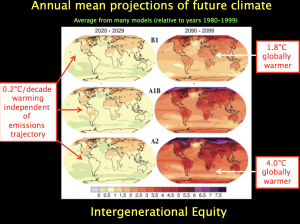 Over the years I have given hundreds of public lectures on the science of global warming. I also developed a course at the University of Victoria entitled EOS 365: Climate and Society.
Over the years I have given hundreds of public lectures on the science of global warming. I also developed a course at the University of Victoria entitled EOS 365: Climate and Society.
In my last lecture of that course, or towards the end of my public lectures, I typically provide a summary. I use the image to the right to boil the entire issue of global warming down to one question:
Do we, the present generation, owe anything to future generations in terms of the quality of the environment that we leave behind?
Science can’t answer that question. But science tell us why this is ultimately the question that needs to be asked.
The figure, taken from the 4th Assessment report of the IPCC shows six panels with three in each column. The first column shows projected change in annually-averaged surface air temperature (as averaged over many climate models) over the decade 2020-2029 relative to the 1980-1990 average. The second column shows the same thing over the decade 2090-2099 relative to the 1980-1990 average. The three rows show the results when the climate models are forced by human-produced greenhouse gas emissions that follow three distinct trajectories (B1, A1B, A2).
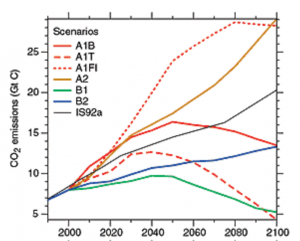 The first (B1) has carbon dioxide (CO2) emissions which peak mid century then decline to below 1990 levels by the end of the century (see figure to the left taken from the IPCC 3rd Assessmnet Report). The CO2 emissions used in the second row (A1B) grow significantly until mid century and then decline slightly thereafter. The third scenario (A2) reveals CO2 emissions that grow throughout the 21st century. Each of these scenarios were developed using assumptions of future population growth, economic growth, energy usage and numerous other socioeconomic factors.
The first (B1) has carbon dioxide (CO2) emissions which peak mid century then decline to below 1990 levels by the end of the century (see figure to the left taken from the IPCC 3rd Assessmnet Report). The CO2 emissions used in the second row (A1B) grow significantly until mid century and then decline slightly thereafter. The third scenario (A2) reveals CO2 emissions that grow throughout the 21st century. Each of these scenarios were developed using assumptions of future population growth, economic growth, energy usage and numerous other socioeconomic factors.
Since 2000, after which CO2 emissions were estimated in the figure above, humans have been following the higher trajectories. In 2017 emissions from industrial activities and changes in land use were 10.0 GtC (Gigatonnes of Carbon) and 1.1 GtC, respectively, for a total of 11.1 GtC.
The results shown in the six paneled-figure above tell us that the amount of warming over the next century is very sensitive to our future emissions of greenhouse gases. But they also tell us that policy decisions made today will have little effect on the warming over next several decades. The climate change we have in store for the next 20-30 years is pretty much in the cards because of past policy decisions. That’s because of something I like to call socioeconomic inertia (we don’t build a coal-fired power plant today just to tear it down tomorrow — our built infrastructure has a turnover time associated with it).
It’s no wonder that our political leaders are having such a difficult time introducing the policies needed to ensure a reduction in greenhouse gases. Politicians are typically elected for short terms. Every four years or so there is a new election.
Let’s suppose that there is a health care crisis in a particular city. A politician may get elected on the grounds that he or she will deal with this crisis. A hospital might get built. During the next election campaign the politician can point to the hospital and say to his or her constituents: “Look. I listened to you. We built a hospital to deal with your local health-care problem”. That politician may get reelected. Now let’s suppose you are a politician who introduces a regulation limiting greenhouse gases. Or you might add a tax or levy to greenhouse gas emissions. The effects of this policy would not be realized during your political career. In fact, they may not be realized in your entire lifetime. They would start to have an effect in the lifetime of the next generation. That’s hardly something you can point to in the next election campaign. There is no immediate benefit.
So if indeed we believe that we have any responsibility for the well-being of future generations in terms of the quality of the environment that we leave behind, we have no choice but to immediately start to implement the policy measures required to reduce greenhouse gas emissions. Waiting to act will mean waiting until its too late. There’s a very simple analogy that illustrates why.
Suppose you put a pot of cold water on a stove and turn the element to high. The water won’t boil right away. It takes time for the water to heat up. If suddenly it gets too hot, and you decide to turn the element down, it also won’t cool right away. That’s because of the large heat capacity of the water. The analogy to global warming is direct. The element on the stove corresponds to the level of greenhouse gases in the atmosphere whereas the pot of water represents the oceans which cover 71% of the Earth’s surface.
Students and members of the public in my classes and lectures would invariably ask: “What can I do to make a difference?”. I would respond that there are three things anyone and everyone can do:
- Use your purchasing power to send a signal to the market by buying products that when produced, delivered, or used, are low greenhouse-gas emitting.
- Exercise your right to vote and ensure you vote for someone who is willing to put in place the policy measures required to reduce greenhouse gas emissions.
- Education: tell everyone you know to do 1) and 2).
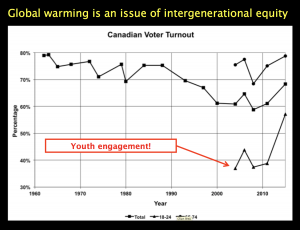 In my 3rd year Climate and Society class I would typically ask how many people voted in the last election. It wouldn’t be unusual to see only about 50% of the class put up their hands. I’d then ask why people chose not to vote and the answers included statements like: “my vote doesn’t matter” or “all politicians are the same, they just care about themselves and getting reelected.”
In my 3rd year Climate and Society class I would typically ask how many people voted in the last election. It wouldn’t be unusual to see only about 50% of the class put up their hands. I’d then ask why people chose not to vote and the answers included statements like: “my vote doesn’t matter” or “all politicians are the same, they just care about themselves and getting reelected.”
I’d show the figure to the right illustrating Canadian voter turnout as a function of time (now updated to include the 2015 general election). I’d talk about the fact that global warming is not really an issue that will affect seniors over the age of 65 (for reasons outlined above) and that 70-80% of this demographic typically vote. I’d suggest that it is important for those who will inherit the consequences of today’s decisions (or lack thereof) to participate in our democratic process to ensure that their interests (the long term consequences) are incorporated into decision-making. I’d suggest that if they didn’t like the names on the ballot then they should consider running themselves or encouraging someone to run that they can support.
Ultimately, when Jane Sterk approached me that 4th time in September 2012, I took a look in the mirror and told myself that I would be a hypocrite if I were not willing to follow the advice I was willing to offer others. And so I agreed to run as a matter of principle and on May 14, 2013 I was elected as a BC Green Party MLA representing the riding of Oak Bay Gordon Head. My journey from scientist to politician is the focus of the Robert Alstead’s feature documentary entitled Running on Climate.
3. British Columbia’s reckless efforts to land an LNG industry
By now, the results of the 2013 general election in British Columbia are but history. Campaigning on the promise of 100,000 jobs, a $100 billion prosperity fund, a $1 trillion increase in GDP, thriving schools and hospitals, and the potential elimination of the PST, Christy Clark and the BC Liberals won a bigger majority government than they had going into that election.
While the BC NDP were campaigning for “Change for the better, one practical step at a time” (whatever that means), I was busy calling out the BC Liberal promises as nothing more than unsubstantiated hyperbole. In one of my first blog posts as a newly elected MLA, I penned an article entitled: Living the Pipe Dream: Basing BC’s Economy on Bubble Economics. This was based on some Powerpoint presentations I had given during the election campaign. In that article I stated:
It is simply a pipe dream to believe that by the end of this decade, the same natural gas price differential will exist between North America and Asia. It is also much cheaper to pipe natural gas directly from Russia to China than it is to liquefy it and ship it from North America. And as we have seen above, there is much, much more natural gas located in Russia. British Columbians deserve better.
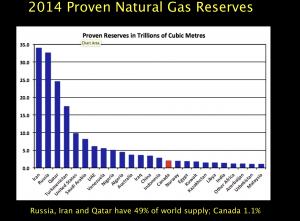 I pointed out that the widening of the Isthmus of Panama was about to be completed and that the southern US, a historical importer of LNG, already had the infrastructure on the coast to become an exporter. They were set to meet any upcoming supply gaps in the Asian market. I pointed out that Australia had massive LNG projects about to come online. I pointed out that Russia, with about 20 times all of Canada’s shale gas reserves, had entered into multi-decade contracts to deliver natural gas to China. And Russia’s natural gas reserves are largely conventional and so much cheaper to extract. More recently, I pointed out that Iran, containing the world’s largest reserves of natural gas, just had sanctions lifted. But that didn’t stop the BC Liberals from desperately trying to deliver the impossible.
I pointed out that the widening of the Isthmus of Panama was about to be completed and that the southern US, a historical importer of LNG, already had the infrastructure on the coast to become an exporter. They were set to meet any upcoming supply gaps in the Asian market. I pointed out that Australia had massive LNG projects about to come online. I pointed out that Russia, with about 20 times all of Canada’s shale gas reserves, had entered into multi-decade contracts to deliver natural gas to China. And Russia’s natural gas reserves are largely conventional and so much cheaper to extract. More recently, I pointed out that Iran, containing the world’s largest reserves of natural gas, just had sanctions lifted. But that didn’t stop the BC Liberals from desperately trying to deliver the impossible.
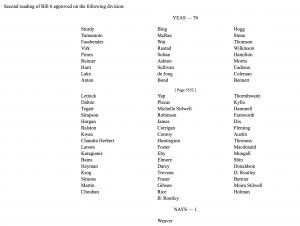 In the fall of 2016, the BC Liberals brought in Bill 6, the Liquefied Natural Gas Income Tax Act. I described it as a “generational sellout” that was incomplete and full of loopholes. I noted that in a desperate attempt to fulfill outrageous election promises, the BC Government did what it could to give away our natural resources with little, if any, hope of receiving LNG tax revenue for many, many years to come. Every single member of the legislature apart from me voted in support of the bill at second reading (see the image to the right).
In the fall of 2016, the BC Liberals brought in Bill 6, the Liquefied Natural Gas Income Tax Act. I described it as a “generational sellout” that was incomplete and full of loopholes. I noted that in a desperate attempt to fulfill outrageous election promises, the BC Government did what it could to give away our natural resources with little, if any, hope of receiving LNG tax revenue for many, many years to come. Every single member of the legislature apart from me voted in support of the bill at second reading (see the image to the right).
During the committee stage for the bill after 2nd reading, I identified a number of potential loopholes that could be exploited by LNG companies to further reduce the already meager amount of tax that they would pay to BC. And then, at third reading, I moved an amendment that would have sent Bill 6 to the Select Standing Committee on Parliamentary Reform, Ethical Conduct, Standing Orders and Private Bills, so that British Columbians could get answers to unresolved questions about the government’s LNG promises. The bill would have benefitted from a more thoughtful analysis by the Select Standing Committee. Third parties could be brought in for consultation, including the public, including First Nations and including the companies involved.
When it came to the vote, only independent MLA Vicky Huntington (Delta South) stood with me in the chamber in calling for more time. The official opposition and the government voted together. It was truly remarkable to witness the opposition collectively stand in favour of this bill. So many of them had offered scathing condemnations of it during second reading. In my view they were still gun shy as being perceived as “the party of no” and against resource development.
Clearly the LNG Income Tax Act wasn’t generous enough and the pot had to be sweetened further with the introduction of the 109 page LNG Income Tax Amendment Act (Bill 26) a few months later. While this bill closed a few glaring loopholes I had identified in Bill 6, Bill 26 introduced what I considered to be an unacceptable revision that granted the minister the power to use regulation to allow corporations involved in the LNG industry to use their natural gas tax credit to pay an 8 percent corporate tax instead of 11 percent. Back in the fall, when I put an amendment to send this to committee, I specifically stated in speaking to that amendment that one of the reasons this had to go to committee was because “I would have wished to explore, in particular the one-half percent natural gas tax credit.”
But it doesn’t end there. The BC Liberals still could not land a positive investment decision for a major LNG facility. And so, the legislature was called back for an unusual summer session to pass Bill 30: Liquified natural gas project agreements act. As I noted earlier when I addressed the bill at second reading, in a ever more desperate attempt to fulfill outrageous election promises, the BC Liberals did what they could to give away our natural resources with little, if any, hope of receiving LNG tax revenue for many, many years to come.
I offered a Reasoned Amendment to this bill. In speaking to the amendment I looked across the aisle to the MLAs opposite. I asked them to ask themselves one question. How do they think history will judge them? I argued that the generation of tomorrow will look back and will say: “This generation sold us out.” They will look back at this government’s decisions here to pass this bill with disdain, with shock, with disbelief and ask why?
By this time the BC NDP realized just how outrageous the sellout was becoming and they joined me in supporting my amendment and voting against the bill at second reading.
What we should do: Bill 30 should be repealed.
Bill 30 set the stage for the BC Government to approve the Project Development Agreement that it had already signed with Pacific Northwest LNG on May 20, 2015. One of the key conditions of the deal, however, was that Petronas had to make a final investment decision on Pacific Northwest LNG by June 2017. Petronas decided to kill the project instead.
In light of this, I recently asked the new Minister of Energy, Mines and Petroleum Resources if the long-term royalty agreement would be terminated as it was the government’s legal right to do so. In my view it literally gave away our resource and now it is being viewed as a starting point for negotiations with other companies who want to lower the bar still further. The Minister responded that she would have more information later. I await such information.
What we should do: This expired long term royalty agreement should be terminated.
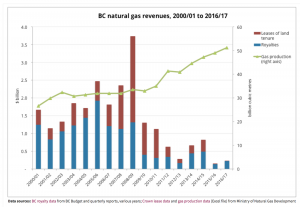 If you thought the LNG deals couldn’t get any richer, you are in for a surprise. British Columbia has had in place a deep-well royalty program since 2003. It was designed to enable the provincial government to share the costs of drilling in B.C.’s deep gas basins. But recently it transformed into a massive subsidy to incentivize horizontal drilling, including shallow wells and hydraulic fracturing. There should be no surprise that British Columbia now earns very little in royalties from its natural gas royalties (see figure to the left taken from an article written by Marc Lee in PolicyNote.ca). Worse still is that there are more than $3.2 billion in unclaimed royalty credits than can be applied against future royalties.
If you thought the LNG deals couldn’t get any richer, you are in for a surprise. British Columbia has had in place a deep-well royalty program since 2003. It was designed to enable the provincial government to share the costs of drilling in B.C.’s deep gas basins. But recently it transformed into a massive subsidy to incentivize horizontal drilling, including shallow wells and hydraulic fracturing. There should be no surprise that British Columbia now earns very little in royalties from its natural gas royalties (see figure to the left taken from an article written by Marc Lee in PolicyNote.ca). Worse still is that there are more than $3.2 billion in unclaimed royalty credits than can be applied against future royalties.
What we should do: The deep-well royalty program should be terminated.
There is more. In Bill 19: Greenhouse Gas Industrial Reporting and Control Amendment Act, 2016, the BC Liberals repealed existing Cap and Trade enabling legislation and allowed new entrants in the LNG industry to have “flexible options” for their initial operations. The first 18 months of a new operation’s existence would “allow for time for testing and other initial activities that may affect emissions and production levels.” The bill also opened up the BC Carbon registry to non-regulated operations (companies and municipalities). The BC NDP and I voted together in opposition to this Bill.
What we should do: Cap and Trade enabling legislation for heavy emitters should be reintroduced.
Unfortunately, the BC Liberals committed even more to LNG proponents. As former Premier Christy Clark stated in the November 2014 announcement of an agreement between BC Hydro and LNG Canada “This agreement is an important step forward towards getting the LNG industry up and running”. Initially the agreement promised to provide power to LNG facilities at a rate of 8.3¢ per kilowatt hour (kWh), before applicable taxes. This rate subsequently dropped to 5.4¢ per kWh (the same as the industrial rate used by other heavy consumers) in the late fall of 2016.
But here’s the problem. In order for BC Hydro to deliver into these contracts, it would need new power. This is where Site C comes in. Site C, when completed, would produce 5,100 gigawatt hours (GWh) of electricity per year.
If you pick up your bi-monthly BC Hydro bill you will see that residential customers presently pay a Tier 1 rate of 8.3¢ per kWh for the first 1350 kiloWatts of electricity and a Tier 2 rate of 12.9¢ per kWh for everything in excess of that. Site C, is now projected to cost $10.7 billion (and rising). With BC hydro’s growing debt, one thing we can be certain of is that these rates will increase. In essence, what the BC Liberals started (and the BC NDP continued) was a massive ratepayer electric subsidy of a nonexistent LNG industry. You and I will pay more than twice what LNG proponents have to pay while at the same time taking on billions of dollars of ratepayer supported debt. If this sounds like a bad deal, it gets worse.
As early as October 2103, I pointed out that it no longer made any fiscal sense to proceed with Site C. Not only was its cost escalating, but the cost of renewables was plummeting. In the last eight years alone, costs for wind power declined by 66 percent. And the costs are predicted to continue to fall. Bloomberg, for example, predicts that onshore wind costs will fall by 47 percent by 2040 and offshore costs will fall by 71 percent. In fact, Alberta just announced it is proceeding with the development of 4000 megawatts of wind energy at a cost of only 3.7¢ per kilowatt hour, well below what Site C will end up costing.
Solar energy tells a similar story. Costs have decreased by 68 percent since 2009, and they’re projected to decrease by a further 27 percent in the next five years. We have a window of opportunity now to harness renewables and build power that puts us on the cutting edge of innovation and provides local jobs and benefits. Furthermore, we are not using our existing dams efficiently and they could be used to level the load from these intermittent sources (and so act like rechargeable batteries).
Building Site C will cost much more than just its construction price tag. It will also cost us lost opportunities in terms of distributed, stable, high paying, long term jobs in renewable energy production.
What we should do: Site C should not proceed.
I reiterate, the reality is that there is a global glut in natural gas supply and despite what some might claim, oil and gas activities play a very minor role in BC’s economy. As I mentioned earlier, the royalties and net revenue from the natural gas sector in British Columbia have plummeted in recent years (see also figure below). In fact in 2016, British Columbia actually lost $383 million from exploration and development of our resource. That’s because the tax credits earned exceeded the sum of the income received from net royalties and rights tenders combined. In the fiscal year ending March 31, 2017, British Columbia earned total revenue of only $3.7 million, a 99.9% drop from 2010 (BC earned 1000 times more revenue in 2010 from natural gas than we did in the last fiscal year).
Figure: Net royalties earned (after claiming tax credits) [red]; net increase of unclaimed tax credits [orange]; net revenue from tendering the rights to natural gas [green]; the sum of these three (i.e. the net revenue to the province from our natural gas resource) [blue]. The scale is in billions of dollars. Each year represents the fiscal year ending March 31 of that year. Thanks to Norman Farrell for providing me the data that he collated from BC Public Accounts, BC Budget and Fiscal Plans, and the Auditor General’s Information Bulletin 1 (May 2011).
What we should do: Stop doubling down on the economy of yesterday and instead focus on our strategic strengths as we diversify for the economy of tomorrow (see section 5).
4. Meeting our 2030 greenhouse gas reduction targets – the line in the sand
During the 2017 election campaign the BC NDP campaigned on a promise to introduce measures to dramatically reduce greenhouse gas emissions in our province. In particular, they promised:
Our plan commits to achieve BC’s legislated 2050 greenhouse gas emission reduction target of 80 percent below 2007 levels and will set a new legislated 2030 reduction target of 40 per cent below 2007 levels.
The BC Liberals had no plan. Obviously the BC Green plan for climate leadership was far reaching.
While the details of their plan were scant, there is no doubt that the BC NDP commitment to reduce greenhouse gas emissions to 40% below 2007 levels by 2030 was the defining issue for me when it came to determining who we would support in a minority government. And so, embedded within the confidence and supply agreement that we signed with the BC NDP is this:
a. Climate Action
As evidenced in the figure at the top of this post, British Columbia emitted 64.7 megatonnes of CO2 equivalent (CO2e) in 2007. By 2030, the BC NDP have committed to reducing emissions to 38.8 megatonnes CO2e and by 2050 this number drops to 12.9 megatonnes. As of today, British Columbia has no plan to reach either of these targets. So how does the addition of a major LNG facility muddy our ability to meet these targets?
Pembina Institute undertook a careful analysis of the emissions that would arise if the LNG Canada proposal in Kitimat would go ahead. Recall from the earlier discussion that in the race to the bottom, British Columbia continues to give away the farm in a desperate attempt to land this facility. Pembina conservatively calculated that when upstream (fugitive emissions from natural gas extraction) were included, the completed LNG Canada plant would add an additional 8.6 megatonnes CO2e by 2030 and 9.6 megatonnes CO2e by 2050.
Let’s look at these numbers a slightly different way. In 2015 British Columbia reported 63.3 megatonnes CO2e in emissions. If we add the emissions associated with the LNG Canada proposal, we would need to reduce emissions from 71.9 megatonnes CO2e to 38.8 megatonnes CO2e by 2030 and from 72.9 megatonnes CO2e to 12.9 megatonnes CO2e by 2050. That’s a 46% and 82% reduction, respectively.
We know that LNG Canada emissions would be in addition to existing emissions. LNG Canada would not build the new facility today just so that they can tear it down tomorrow. We can safely assume it would be producing emissions throughout the period from 2030-2050. This means that for all other aspects of the British Columbia economy, emissions would have to drop from 63.3 megatonnes CO2e in 2015 to 30.2 megatonnes CO2e in 2030 and to just 3.3 megatonnes CO2e in 2050. That’s a drop of 52% and 95%, respectively.
If the LNG Canada proposal goes ahead, then every aspect of our economy will have to collectively cut emissions by more than half in twelve years and by 95% by 2050. This is simply not feasible given socioeconomic inertia in our build infrastructure. I’ll expand on this more in a forthcoming post where i explore British Columbia’s sector specific emissions in more detail.
Some will argue that British Columbia should get credit for any potential emissions reductions that would occur if China, for example, were to use our natural gas and transition away from coal. The problem with this argument is two-fold.
1) International reporting mechanisms do not allow one nation to get credit for such fuel switching in another nation. China gets credit for their domestic emissions reductions, not British Columbia. British Columbia cannot simply rewrite international reporting rules developed through the United Nations Framework Convention on Climate Change (UNFCCC). In addition, it’s not even clear whether or not such fuel switching would occur.
2) More importantly, there is no evidence to suggest that when a lifecycle analysis is considered, replacing coal in China with LNG that originated in BC would actually reduce emissions.
Here’s why.
Methane has a global warming potential that is 84 times that of carbon dioxide over a 20 year horizon. This means that on a molecule per molecule basis, methane is 84 times more powerful than carbon dioxide in its warming ability. It’s 28 times more powerful over a 100 year time frame. And so, it’s important to ensure that the effects of methane are accounted for in a lifecycle analysis.
Unfortunately, it is well known that there are pervasive problems with the estimating and reporting of fugitive emissions in British Columbia. For example, a recent St. Francis Xavier study suggested that BC’s actual fugitive emissions were upwards of 2.5 times higher than what was being officially reported. A particularly policy-relevant and recently published study also highlights troubles and lack of consistency with subnational estimating and reporting of fugitive emissions. In fact, uncertainties are so high that in yet another insightful analysis, that estimated which nations it was best to ship BC LNG to in order to get the best bang for the buck in terms of GHG emissions, it specifically stated:
“It is critical to note that the significance of the results does not lie with the ultimate magnitude of the values, where uncertainties remain due to the evolving nature of upstream fugitive emissions measurements. Instead, the important conclusion is the potential for variability in carbon intensity of LNG across countries.“
That is, while the relative merits of shipping to one country over another was quantified, the authors recognized that uncertainties in fugitive emissions precluded a conclusion as to whether the lifecycle analysis led to a net greenhouse gas benefit. In particular they noted,
“Results include two Canadian studies, both of which report total life cycle greenhouse gas emissions notably lower than those reported by the others, ranking the lowest and second lowest values in the collected data.”
and
“The Canadian datasets would benefit from disaggregating emissions, such that areas in need of research and improvement can be identified.”
5. In Summary: A vision for the future
Over the course of this essay, I hope that I’ve been able to explain why my continued support of the BC NDP in this minority government is conditional on them implementing a realistic and achievable plan to meet the 2030 greenhouse gas reduction targets. I initially got into politics for the reasons articulated above. I could no longer look my family, friends, students and colleagues in the face knowing that I let future generations be sold out when I had the chance to stop it from happening. This is a principled decision for me and the reason why I refer to it as a line in the sand.
It is not possible to on the one hand claim you have a plan to meet our targets and then on the other hand start promoting the expansion of LNG. It’s a bit like Mr. Trudeau’s recent doublespeak where he says that we need to triple the capacity of the Kinder Morgan pipeline in order to meet our climate commitments. That is, we need to increase emissions to reduce emissions!
In section 3, I outlined the numerous ways the BC Government can take steps to stop the generational sellout embodied in the great LNG giveaway. I will continue to work to push them in this regard.
In the shadows of the massive challenges that we face, our province needs a new direction.
A new direction that offers a realistic and achievable vision grounded in hope and real change.
A new direction that places the interests of the people of British Columbia first and foremost in decision-making. And it’s not only today’s British Columbians that we must think about, it’s also the next generation who are not part of today’s decision-making process.
A new direction that will build our economy on the unique competitive advantages British Columbia possesses, not chase the economy of yesteryear by mirroring the failed strategies of struggling economies.
A new direction that will act boldly and deliberately to transition us to 21st century economy that is diversified and sustainable.
A new direction that doesn’t wait for public opinion — but rather builds it.
We have a unique opportunity in British Columbia to be at the cutting edge in the development of a 21st century economy.
Our high quality of life and beautiful natural environment attract some of the best and brightest from around the globe —we are a destination of choice. Our high school students are consistently top ranked — with the OECD specifying BC as one of the smartest academic jurisdictions in the world. And we have incredible potential to a create clean, renewable energy sector to sustain our growing economy. When we speak about developing a 21st century economy — one that is innovative, resilient, diverse, and sustainable — these are unique strengths we should be leveraging.
A 21st century economy is sustainable — environmentally, socially and financially. We should be investing in up-and-coming sectors like the clean tech sector, and creative economy that create well-paying, stable long-term, local jobs and that grow our economy without sacrificing our environment.
We should be using our strategic advantage as a destination of choice to attract industry to BC in highly mobile sectors that have difficulty retaining employees in a competitive marketplace. We should be using our boundless renewable energy resources to attract industry, including the manufacturing sector, that wants to brand itself as sustainable over its entire business cycle, just like Washington and Oregon have done.
We should be setting up seed funding mechanisms to allow the BC-based creative economy sector to leverage venture capital from other jurisdictions to our province. Too often the only leveraging that is done is the shutting down of BC-based offices and opening of offices in the Silicon Valley.
We should fundamentally change the mandate of BC Hydro. BC Hydro should no longer be the builder of new power capacity. Rather, it should be the broker of power deals, transmitter of electricity, and leveler of power load through improving British Columbia power storage capacity. Let industry risk their capital, not taxpayer capital, and let the market respond to demands of cheap power.
Similarly, by steadily increasing emissions pricing, we can send a signal to the market that incentivizes innovation and the transition to a low carbon economy. The funding could be transferred to municipalities across the province so that they might have the resources to deal with their aging infrastructure and growing transportation barriers.
By investing in the replacement of aging infrastructure in communities throughout the province we stimulate local economies and create jobs. By moving to this polluter-pays model of revenue generation for municipalities, we reduce the burden on regressive property taxes. Done right, this model would lead to municipalities actually reducing property taxes, thereby benefitting home owners, fixed-income seniors, landlords and their tenants.
Yes, we should be investing in trade skills, as described, for example, under the B.C. jobs plan. But we should also be investing further in education for 21st century industries like biotech, high tech and clean tech. It’s critical that we bring the typically urban-based tech and rural-based resource sectors together. Innovation in technology will lead to more efficient and clever ways of operating in the mining and forestry industries.
Natural gas has an important role to play. But, we should use it to build our domestic market and explore options around using it to power local transport. BC businesses such as Westport Innovations and Vedder Transport have already positioned British Columbia as an innovative global leader in this area.
We should be investing in innovation in the aquaculture industry, like the land-based technologies used by the Namgis First Nation on Vancouver Island who raise Atlantic salmon without compromising wild stocks.
In forestry we send record amounts of unprocessed logs overseas. Now is the time to retool mills to foster a value-added second growth forestry industry.
These are just a few ideas that could help us move to the cutting edge in 21st the century economy.
Fundamental to all of these ideas is the need to ensure that economic opportunities are done in partnership with First Nations. And that means working with First Nations through all stages of resource project development – from conception to completion.
I am truly excited about the prospects that lie ahead in this minority government. British Columbia has so much to offer and we can and shall be a leader in the new economy. And the recent announcement of the appointment of Dr. Alan Winter as the new Innovation Commissioner is an exciting step in this direction.

